Historic Village Hall
TARRYTOWN, NY
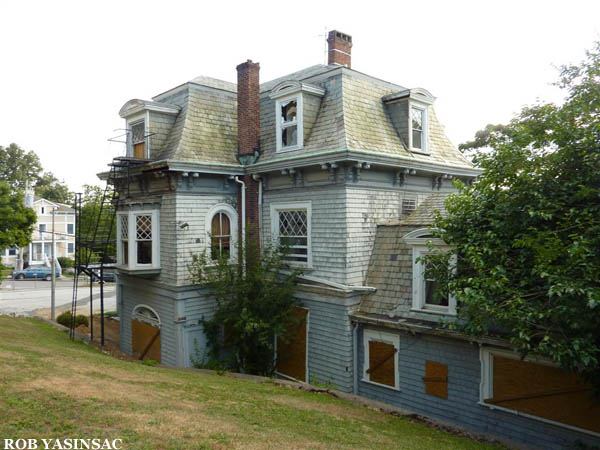
I was surprised and disappointed to read in
in the summer
of 2010 that plans exist to raze the building that was Tarrytown's historic Village Hall. Originally a mansion that was moved from its former location when the Warner Library was built, the house is an exceptionally handsome example of the French Second Empire style that became popular in the late 1850s. Similar houses throughout Westchester County are listed on the National Register of Historic Places, suggesting that this house is also eligible for listing.
Broadway in Tarrytown was once lined by many such fine homes, and the old
village hall is one of the few historic buildings that survives there. The house
retains many interior and exterior architectural details, including a bracketed cornice, round dormer windows and bay windows, and lattice windows and fanlight windows.
(Some windows have been removed since these photographs were taken - legally, or
illegally, I do not know how.)
The Village of Tarrytown housed its municipal offices here for decades, and
moved out of this location and into a new office building opposite the Tarrytown
Metro-North train station in the summer of 2009. The village agreed to sell the
old village hall to National RE/Sources with the understanding that moderate-income housing
be developed on the site, which also includes a detached apartment and garage.
National RE/Sources (cute, innovative spelling there, by the way) is the chosen
developer that built luxury housing on the Hudson River-front in Tarrytown. Some
of the units have been constructed as of summer 2010, but the rest of the
waterfront plan has yet to be fulfilled. Perhaps all of these developers up and
down the Hudson River didn't realize if they all built the same thing (luxury
housing) , then there might be too much of it. Because apparently the demand
isn't here to keep building the rest of what was promised.
To gain public support when such fancy plans are laid out, the developers throw
a bone in the form of affordable housing. The housing is usually not built at or
near the site of the luxury units, which would make most sense to me. Rather,
these units go up in a separate location and are built separately, if they are
ever built at all. Tarrytown's historic Village Hall was supposed to be razed by
August 2010, to make way for these lower-class units. The deadline has come and
gone, and I would not be surprised if the housing is not built at all and the
people of Tarrytown are left with another developer's empty promise.
In any event, the plan to demolish historic Village Hall (and its
apartment/garage) is unfortunate, and a surprise to me. Perhaps because of vague news reports, I previously thought that the house itself would be turned into apartments.
Similar mansions in the area serve that purpose today, including an apartment
house in a mansion at the bottom of Church Street in Tarrytown.
I wrote to the Village of Tarrytown and National RE/Sources to urge them to reconsider the plan to demolish the former village
hall. It is a well-preserved piece of handsome architecture and an irreplaceable part of the fabric of Tarrytown’s built landscape.
Village Administrator Michael S. Blau responded that the "contract in
existence" obligates the development of the site, and that the house has to
be demolished since the minimum number of units contracted for cannot be built
in the existing structure. I suggest that the required units be included at the
luxury riverfront development, where there are unsold units and plenty of
unbuilt
land.
Blau also referred to the "chopped up" condition of the house, and the
"considerable sums of money to make (the house) structurally sound."
In this case, "chopped up" would happen anyway, should the old mansion
be converted into a few apartments, so there is no problem there. Regarding the
"considerable sums of money," National RE?Sources didn't seem to have
any trouble finding considerable sums of money and resources to build their
waterfront units. Demolishing the house, carting away the debris, and building a
new home would also require considerable sums of money. Not to mention, the
process is environmentally unfriendly. Green is in, and renovating an old house is a
better use of resources than building anew. National/ReSource's commitment to the community should extend beyond what
they can sell to the wealthy on the Hudson.
This house can easily be converted into the desired apartments. A number of talented architects in the rivertowns have worked on many historic structures, some in near-ruinous condition, and have restored and rehabilitated these old buildings, and made it possible to adaptively-reuse them. The same should be done for the historic village hall.
The reuse of this house will be another spotlight example of preservation and commitment to the community.
I recently read an editorial from the Journal News (Rockland edition - they
support preservation there, but not in Westchester) decrying the condemnation of an early village home in Nyack. The editors hoped that someone should save that house, not tear it down, because “local counties have lost too much of their early history... in the suburban march that is ‘progress.’” “That history, once gone, is lost forever.”
Until the wrecking ball comes down on the old mansion that was Tarrytown’s historic village hall, it is not too late to save it either.
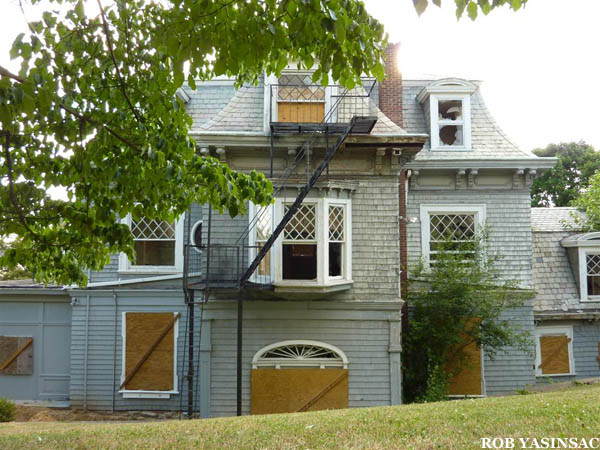
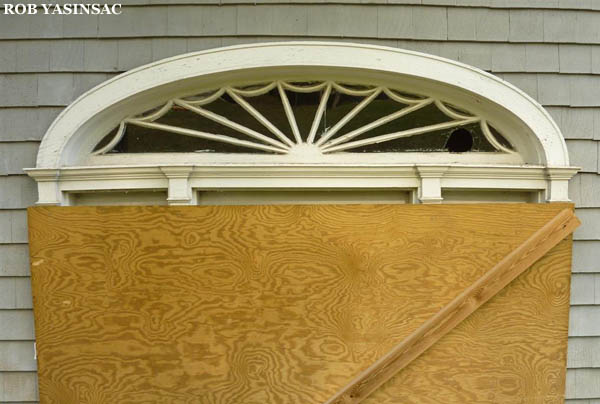
This beautiful fanlight window has already been
removed from the house.
By the owner or by an antiques salvager, I'm not sure.
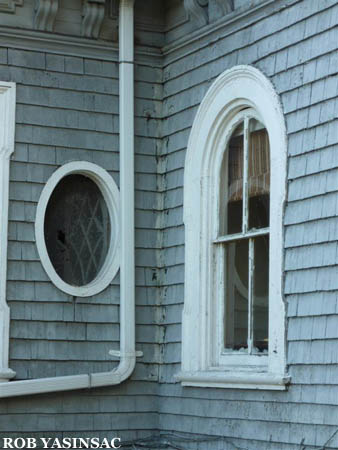
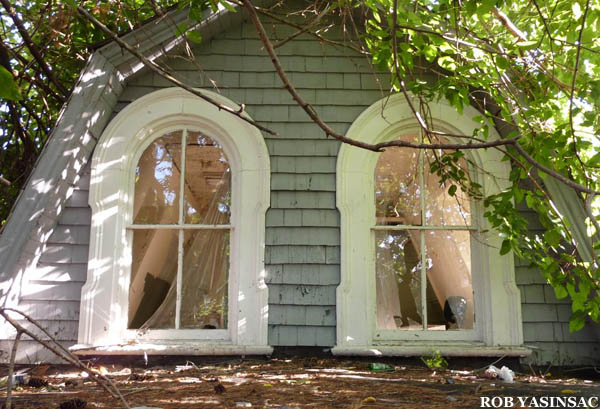
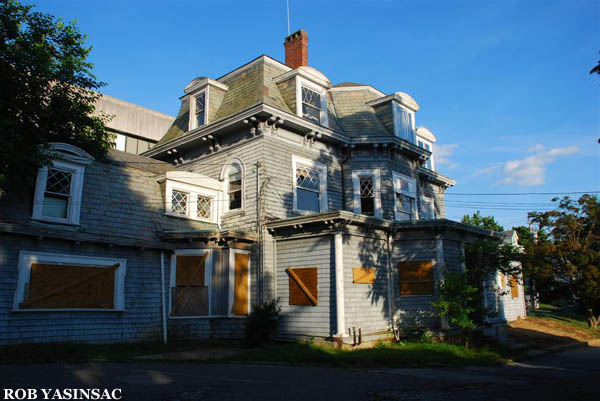
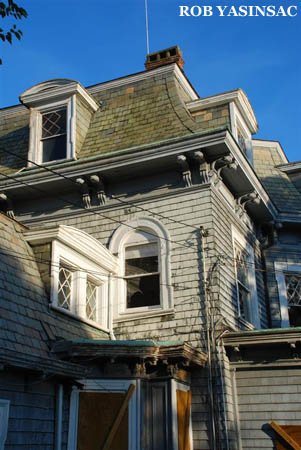
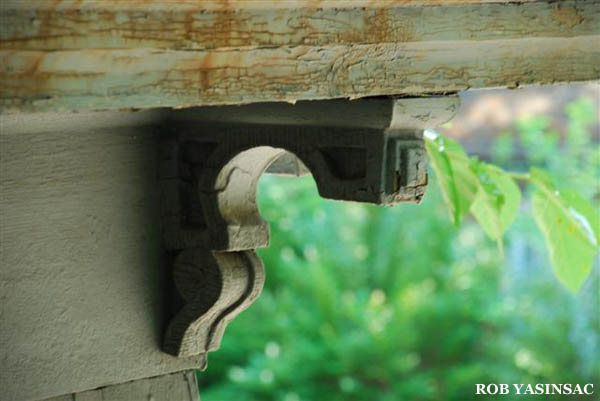
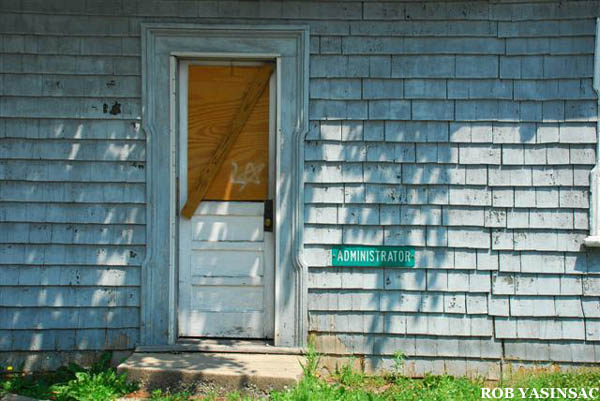
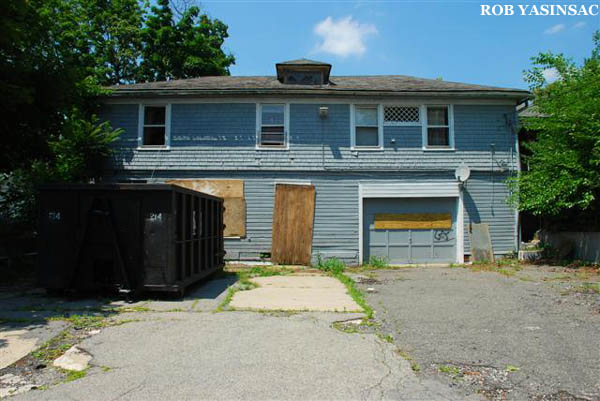
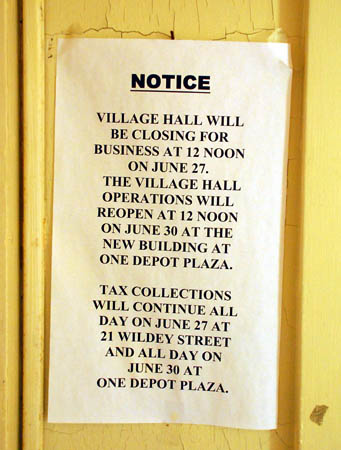
This page copyright © 2010 by Robert J. Yasinsac.
All rights reserved.
Reproducing or copying photographs
without the permission of Robert Yasinsac is prohibited.
